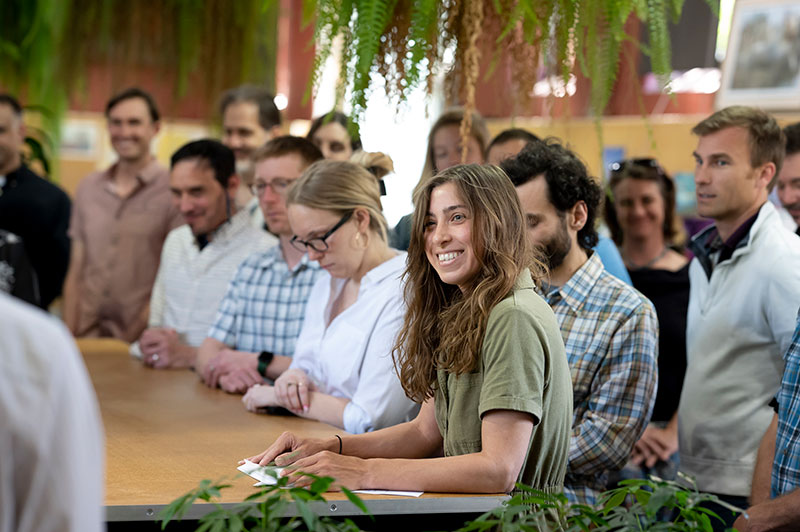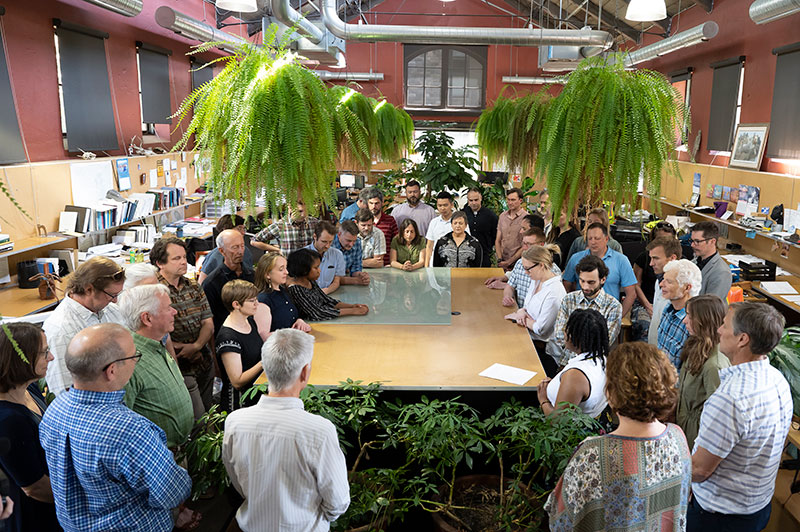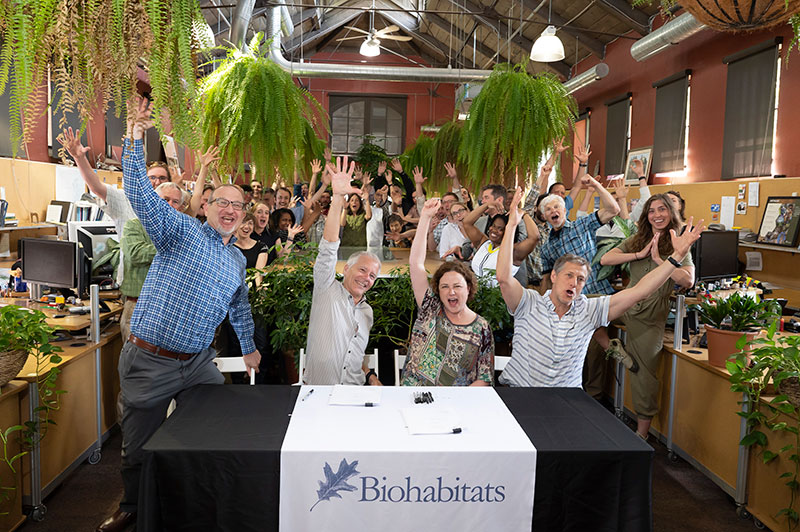Transitions can be tricky.
They are interstitial, uncertain spaces. They are the liminal and ephemeral of the in between. They are the marshes, the floodplains, the shore. They are when the ocean becomes the earth, and the earth becomes the sea. In this space of mud and wrack and changing tides, there is volatility, complexity, a Schrodinger equation. It is a space of conditional multitude, in which anything can happen. In which the shad switches from salt loving to fresh breathing and back again.
Transitions are spaces characterized by unlimited potential.

Katherine Bartter, sharing her words about transition with the Biohabitats team. Photo by Larry Canner.
Vinyasa is a branch of yoga characterized by transitions. It is a set of sequences—symmetrical, coordinated movements—linked together via the vinyasa. Vinyasa translates to: to transition, to arrange structures or parts in a thoughtful, special way, or at its simplest, to breathe.
It is the vinyasa, the transition, that is the critical component of the practice. It is the practice of reckoning with uncertainty and how you harness the potential to overcome and continue. But every vinyasa can manifest differently, every path to continue is neither right nor wrong—but rather, what is needed. The next form manifested is determined by perception, forethought, and an assessment of your center. There is no teacher, there is only the inner guide of your breathing. It is in this space of breathing where you are able to look inward and look to your own core to propel you forward into the next form in a way that is appropriate for your mind, your body, and your center.

The breath not only provides the physical capability of oxygen intake to fuel the muscles, but the space for calculation, for assessment of the interior. The space to ask the self whether to launch into chataranga dandasana for a full sun salute or to repose in child’s. It is imperative to know that neither option, be it handstand or a comfortable seat, is better than the other. Rather it is an indication of listening to the needs of that center. A center in which your body can rely and engage to carry you through uncertainty and change.

Led by People & Culture Leader Katherine Bartter and Environmental Scientist Tanaira Cullens, BIohabitats team members take a moment to contemplate the significance of the upcoming transition. Photo by Larry Canner.
Biohabitats is lucky. We possess a strong center. One that is upheld by each and every one of us. No matter where our next step takes us or where we leap off from, we can always rely on our breath to find and to tap into the wild of an undammed river; the compassion of the healer of the displaced and the damaged; the foresight of an interconnectedness of all beings and each other; the integrity of scientific rigor and keen observation; and the adaptation and innovation of an evolution into our next needed form.
Within our next breath that leads us from an individually-owned corporation to the Biohabitats Purpose Trust, I know we can rely and lean on our center—a center of strength, of stability, and of heart; a center molded by a founder, a leader, and a friend who demonstrates one in the same; and a center that will guide our Trust in perpetuity—and I know within that center, we will harness our greatest potential to Restore the Earth and Inspire Ecological Stewardship.

Celebrating after the signing of documents signifying Biohabitats’ ownership transition to the Biohabitats Purpose Trust

